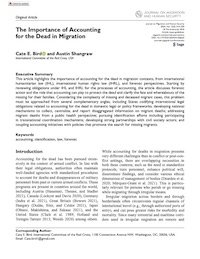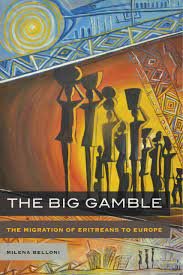By Abby Córdova, Jonathan Hiskey, Mary Malone and Diana Orcés
U.S. efforts to control unauthorized crossings of its southwest border have long rested on the idea of deterrence — if migrants know that a border is dangerous to cross and the likelihood of deportation is high, they will be dissuaded from trying in the first place. Despite the seemingly intuitive logic of this strategy, and the billions of dollars invested in it, deterrence efforts largely have failed, with the number of border crossings in recent years exceeding those of 30 years ago. To understand why this decades-old, bipartisan deterrence strategy has proven ineffective, we focus on individuals from El Salvador, Guatemala, and Honduras who have previous migration experience, with a vast majority of them seeking entry into the U.S. These individuals have direct knowledge of the difficulties and dangers a border crossing poses, yet many report plans to try to cross the border again. To understand why they persist, we rely on survey data specifically collected to better understand the root causes of international migration. We find that citizens with previous migration experience are significantly more likely to report plans to emigrate, in particular women, younger cohorts, and those at the bottom of the economic ladder. In contrast, family reunification does not appear to play a significant role in driving the migration intentions of those with a prior migration experience. Further, deportation does not deter migrants from trying again, as individuals who have been deported are just as likely to report plans to emigrate again as those who returned to their home countries voluntarily and those who never reached their destination. Most importantly, our research indicates that human insecurity is at the core of why Central Americans who have migrated in the past are more likely to report migration plans for the future. Both the threat of violence and food insecurity are central drivers of their persistent predisposition to embark on the journey again. Individuals remain undeterred in their efforts to escape their country because upon returning to that country, they confront the same conditions that led them to attempt to flee in the first place. We draw two main policy implications from our research. First, the U.S. government should continue its prioritization of investments in tackling the root causes of forced migration through the empowerment of civil society organizations and the channeling of foreign aid to marginalized communities affected by human insecurity, such as those suffering food insecurity or fearing violence. The main objective of these investments should be to improve the living conditions of individuals, giving them a viable option of remaining in their country. Second, the U.S. must invest greater resources in its immigration system to reduce the current backlog of asylum cases, and expand H2-a and -b visa programs to provide a more expansive legal path to migration. Facilitating a legal pathway to immigrants who face heightened human insecurity, like the potential repeat migrants in our study, would prevent further deaths that lay at the hands of a border policy focused on deterrence.
Journal on Migration and Human SecurityVolume 12, Issue 3, September 2024, Pages 160-181




















